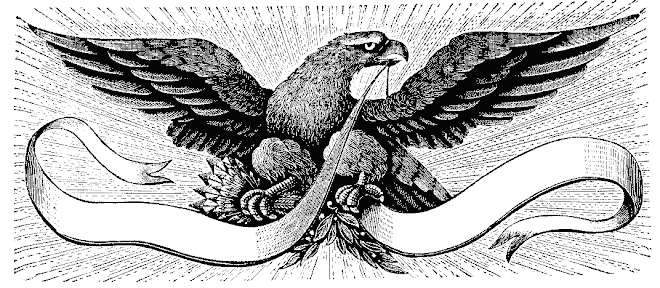from Big Government:
Public Sector Pensions: The Real Bailout Bomb is Still Midflightby Kyle Olson
Will the madness ever stop? Just over two weeks ago, Congress passed a $10 billion “Education Jobs Fund” that gave money to cash-strapped states to keep teachers and other school employees on the job. It was spun as a victory for the kids, but the real winners were the teacher unions who were spared from making any concessions on pay and benefits that are necessary to balancing school budgets.
Once that $10 billion is spent, the structural problems of school spending will still remain. A recent study from the Manhattan Institute and the Foundation for Educational Choice finds that “teacher pension liabilities for all 50 states now total almost $1 trillion….almost triple the cost of what state officials have on their balance sheets.” The study concludes that these unfunded public burdens “could bankrupt state budgets including education programs.”
While the teacher unions won a temporary victory, we have to believe that they are paying careful attention to another, bigger bailout that is lurking in the shadows. And this time, there is more at stake than just a few billion dollars. If this latest bailout becomes law, it will mark the first time in American history that tax dollars are used to fund the pension plans of private—unionized—industry.
The teachers unions know that their lavish pension plans will result in a financial tsunami for the states. Should this new bailout go through, it will pave the way for a massive bailout for the teacher unions, the likes of which have never seen. This is a very big deal.
In late July, Sen. Dick Durbin (D – IL), the second most powerful Democrat in the U.S. Senate, announced that he is supporting the “Create Jobs and Save Benefits Act of 2010.” This proposed bill that would make certain labor union pension plans the “obligations of the United States.” Put another way, the American taxpayer will be on the hook for financially disastrous pension plans.
Here’s how it would work. Congress would specifically bail out troubled Multiemployer Pension Plans (MEPPs). These pension plans are used in the transportation, construction, and entertainment industries (among others) in which workers regularly change employers but stay working in the same field. Instead of having each employer set up a unique pension plan, MEPPs establish a general pension fund that employers pay in to at a rate determined during collective bargaining sessions with the union. Unlike traditional pension plans that are controlled entirely by the company, the unions help manage the MEPPs.
Death By A Thousand Cuts
The MEPP system may work okay when the economy is humming along, but its structural flaws quickly become evident during a recession. Since the beginning of this current economic downturn, a large number of companies have gone out of business. As a result, fewer employers are paying into the MEPPs, and those employers are having to pay more and more into these pension funds just to keep them afloat. Employers are in danger of death by a thousand cuts.
If the unions were responsible, they would head back to the negotiating table and rework their pension agreements to make them sustainable. But why do that when there’s bailout money to be had?
Here’s where Congress enters the picture. The bill supported by Sen. Durbin would take the pension benefits of workers whose companies have gone bankrupt and put them into a separate account. This new account would be administered by the Pension Benefit Guaranty Corporation (PBGC), a government run insurance fund for pension plans. Currently, when a pension plan goes bust, the PBGC takes it over and uses the insurance premiums paid by its members to cover the costs. But since the PBGC itself is more than $20 billion in debt, that is not a viable solution.
Under this proposed bailout, these new, separate pension accounts (called the “partitioned plan”) would become the “obligations of the United States.” In other words, the multiemployer pension plans would be given a clean bill of health after the taxpayers make them whole. As Yogi Berra might say, “It’s deja vu all over again!”
In testimony before the U.S. Senate, Assistant Secretary of Labor Phyllis Borzi put it this way:
“The proposal ultimately makes the taxpayers liable for paying the benefits of the partitioned plan. Currently, no other benefit obligations assumed by the PBGC are subject to the full faith and credit of the U.S. government.”
Read that last sentence again and let it sink in. What’s being proposed by the happy-sounding “Create Jobs and Save Benefits Act of 2010” is unadulterated socialism. Should this bill pass, unions will know that no matter how reckless and irresponsible their demands are during a collective bargaining showdown, the U.S. taxpayer will be forced to come to the rescue should their employer go bankrupt.
“We want ours!”
This proposed bailout needs to clear a few major hurdles before it can become law. The first hurdle: the American people are sick of bailouts. That’s why supporters are selling this as a jobs bill. They argue that if the taxpayers take responsibility for these pension plans, employers will have money freed up to spend on job creation. This is the “Rebecca of Sunnybrook Farm” approach to economics: it’s nice and simple, but it has no basis in reality. Adding more debt (which will need to be paid back in the form of higher taxes) is no way to grow the economy. Not even the bill’s supporters believe this. But by labeling something as a “jobs bill” instead of a “bailout,” they hope enough people will be bamboozled into supporting it. Hey, it worked for the teacher unions.
The cost is another major sticking point. Supporters of the bailout argue that it would “only” cost around $10 billion. Here’s how a spokesman for the International Brotherhood of Teamsters put it: “We’re not asking for trillions of dollars like the banks get. We’re just looking for temporary relief for pensions that lost money in the stock market crash.” Translation: “We want ours!”
The $10 billion price tag for the bailout is laughable. A 2009 analysis by Moody’s Investor Services looked at some of the largest MEPPs in the nation and concluded “that these plans are collectively underfunded by upwards of $165 billion.” What’s going to happen to the other $155 billion? Does anyone really think this bailout would stop at $10 billion? Anyone?
The Senate bill and its counterpart in the House of Representatives are currently hung up in committee. It looked like the union pension bailout was going nowhere until Sen. Durbin threw his weight behind it. This has fueled speculation that the Senate may try to push this bailout through later this year, after the November elections. Even though there is no appetite among the public for another bailout, organized labor might demand that Congress jam it through. Big Labor is already upset that their friends in Congress have not passed “Card Check” legislation which would do away with secret ballots when employees are deciding whether or not to join a union.
If this bailout fails to get through this year, rest assured the idea isn’t going away. The unions can’t afford to let this issue go away – there’s too much money and power at stake. It’s true they could get by with less, but that’s simply not the union way.
There’s a scene in the 1969 film Butch Cassidy and the Sundance Kid in which the duo is being relentlessly pursued by a posse. Exhausted and exasperated, Cassidy wonders aloud, “Who are those guys?”
That’s how the American taxpayer must feel about those continually seeking bailouts. In this case, the pursuers are from Big Labor. And you can bet they will soon be joined by the National Education Association and the American Federation of Teachers.
A READER ON THE STATE OF THE POLITICAL DECAY AND IDEOLOGICAL GRIDLOCK BETWEEN ONE GROUP WHO SEEK TO DESTROY THE COUNTRY, AND THOSE WHO WANT TO RESTORE IT.
The Rise and Fall of Hope and Change




Alexis de Toqueville
The American Republic will endure until the day Congress discovers that it can bribe the public with the public's money.
Alexis de Tocqueville
Alexis de Tocqueville
The United States Capitol Building

The Constitutional Convention

The Continental Congress

George Washington at Valley Forge



Subscribe to:
Post Comments (Atom)
No comments:
Post a Comment